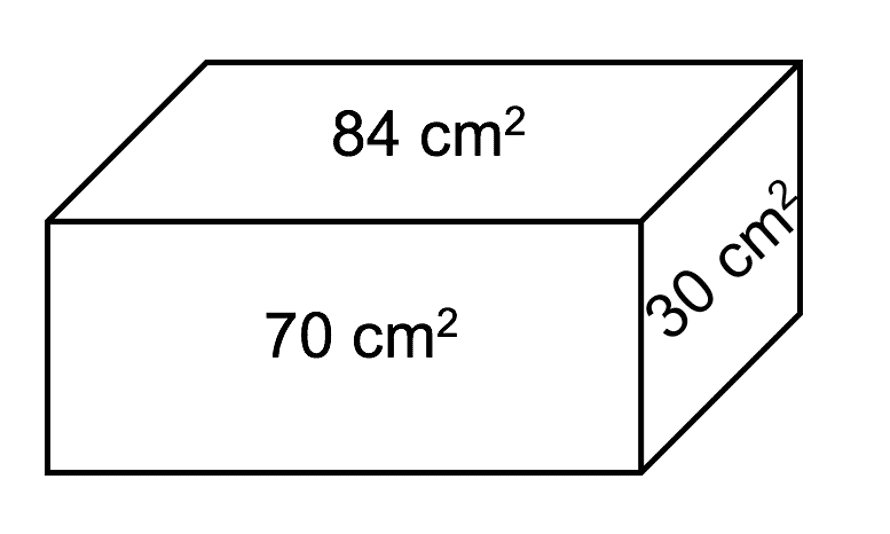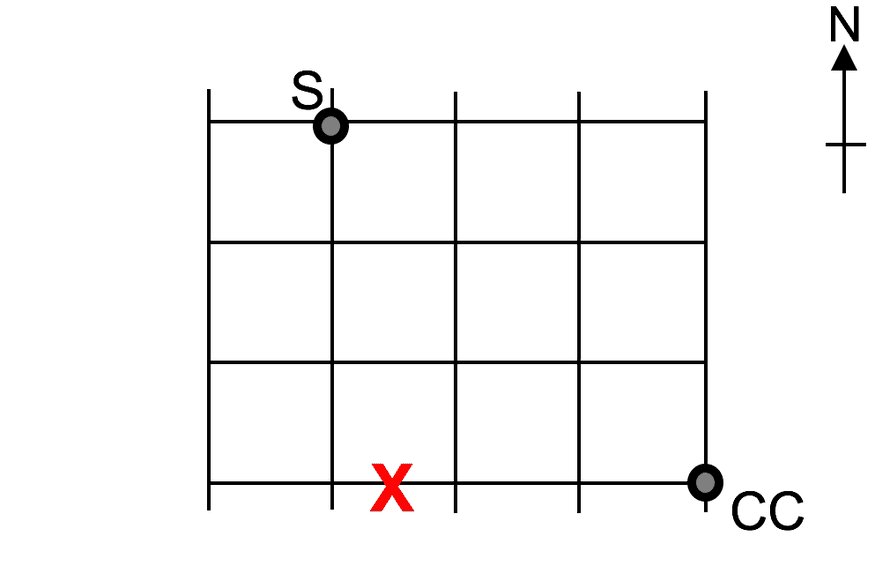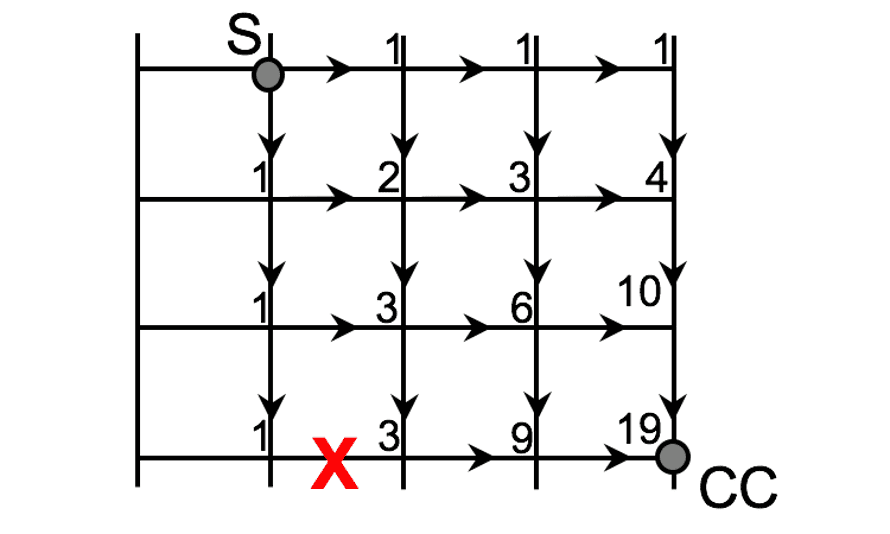Funny Math Problem That Equals 420
Earlier today I set you ten questions from this year's International Singapore Maths Competition. Here are the questions and the answers. On the whole you did very well - smarter than a 10-year-old Singaporean! (With the caveat that they didn't have multiple choice answers to choose from, and they are only ten). The only questions where your most popular answer the wrong one were 6 and 8. (C in Q6, and B in Q8). Thanks for taking part - now look through your workings...
For Year 5 pupils:
1. Mary cut off 2/5 of a piece of string. Later, she cut off another 14 m. The ratio of the length of string remaining to the total length cut off is 1 : 3. What is the length of the remaining string?
- A. 5 m
- B. 7 m
- C. 10 m
- D. 14 m
Solution is C. [73 per cent of readers got it right]
Oh Mary! This is how I would have solved it, using equations. Let L be the original length of the string, and R be what is remaining once you have cut the string twice. We know that R = (L x 3/5) – 14m, and that ((L x 2/5) +14) /R = 3, or 2L/5 + 14 = 3R. By substituting the first equation in the second we have 2L/5 + 14 = 9L/5 –42. Which rearranges to:7L/5 = 56, or L = 40. So R = 10m.
Interestingly, the Singapore method of solution is different. It requires us to think more visually about the string: We cut 2/5 of it. Then 14m, and are left with a piece that is a third of the size of what was cut. In other words, we are left with 1/4 of the original length. In order to compare the fractions 2/5 and then 1/4, lets change them to the lowest common denominator, which is 20. So, we cut off 8/20, subtract 14m and are left with 5/20. Let's now draw the string divided into twentieths:

The 14m must be 7/20 of the string, which mean each twentieth is 2m. The remaining piece of string is 5/20, i.e 10m
2. The areas of the faces of a rectangular box are 84 cm2, 70 cm2 and 30 cm2. What is the volume of the box?

- A. 300 cm3
- B. 420 cm3
- C. 490 cm3
- D. 504 cm3
Solution is B. [85 per cent of readers got it right]
First we need to work out the possible side lengths, by seeing which two numbers multiply to be the area of each face. The 84 face could be 1 x 84, 2 x 42, 3 x 28, 4 x 21, 6 x 14 or 7 x 12. The 70 face could be 1 x 70, 2 x 35, 5 x 14 or 7 x 10. The 30 face could be 1 x 30, 2 x 15, 3 x 10 or 5 x 6.
- The common factors between 84 and 70 are 1, 2, 7 and 14.
- The common factors between 84 and 30 are 1, 2, 3 and 6.
The only way to make 84 with one each of these common factors are 14 from the top line and 6 from the bottom. So the edge bordering the 84 and 70 faces has length 14, and the edge bordering the 84 and 30 edges has length 6. Which means the height must be 30/6, or 70/14 = 5. Thus the volume is 14 x 6 x 5 = 420cm.
3. There are four numbers. If we leave out any one number, the average of the remaining three numbers will be 45, 60, 65 or 70. What is the average of all four numbers?
- A. 50
- B. 55
- C. 60
- D. 65
Solution is C. [82 per cent of readers got it right]
If the four numbers are A, B, C and D, then we know that
- A + B + C = 45 × 3
- A + B + D = 60 × 3
- A + C + D = 65 × 3
- B + C + D = 70 × 3
Now add them up to get 3A + 3B + 3C + 3D = (45 + 60 + 65 + 70) × 3
Which is A + B + C + D = (45 + 60 + 65 + 70) = 240. So their average is 240/4 = 60
4. A march goes through the streets from the School (S) to the Community Centre (CC). One of the streets is closed. If the march can only travel East or South, what is the number of different possible ways to get to the Community Centre? [10 per cent]

- A. 16
- B. 19
- C. 20
- D. 22
Solution is B. [46 per cent of readers got it right]
There are 19 possible ways:

5. Sally was given a set of 5 cards numbered 1 to 5 and Peter was also given a set of 5 cards numbered 1 to 5. They were then blindfolded and told to pick a card from their respective sets. The sum of the numbers from the two cards was told only to Sally and the product of the numbers was told only to Peter. They were then told to guess the two numbers. Below is what each of them said:
Peter: I do not know the two numbers.
Sally: Now I know the two numbers.
Peter: I still don't know the two numbers.
Sally: Let me help you. The number I was told is larger than the number you were told.
Peter: Now I know the two numbers.
What are the two numbers?
- A. 1 and 4
- B. 1 and 5
- C. 2 and 4
- D. 2 and 5
Solution is A. [72 per cent of readers got it right]
Since each of them were each given numbers 1 to 5, if Peter was told any of the following numbers, he would be able to tell what the two numbers that were picked were:
- 1 → 1 × 1 The two numbers are 1 and 1.
- 2 → 1 × 2 The two numbers are 1 and 2.
- 3 → 1 × 3 The two numbers are 1 and 3.
- 5 → 1 × 5 The two numbers are 1 and 5.
- 6 → 2 × 3 The two numbers are 2 and 3.
- 7 → 1 × 7 The two numbers are 1 and 7.
- 8 → 2 × 4 The two numbers are 2 and 4.
- 9 → 3 × 3 The two numbers are 3 and 3.
- 10 → 2 × 5 The two numbers are 2 and 5.
- 12 → 3 × 4 The two numbers are 3 and 4.
- 15 → 3 × 5 The two numbers are 3 and 5.
- 16 → 4 × 4 The two numbers are 4 and 4.
- 20 → 4 × 5 The two numbers are 4 and 5.
- 25 → 5 × 5 The two numbers are 5 and 5.
(Products 11, 13, 14, 17, 18, 19, 21, 22, 23 and 24 cannot be formed.)
The only product that is ambiguous is 4 since 4 could be equal to 1 × 4 or 2 × 2. Therefore, when Peter said that he did not know the numbers, Sally would be able to know that the product Peter was told had to be 4. Since Sally said that the sum she was told is larger than the product Peter was told, the two numbers that were picked had to be 1 and 4 (sum = 5) and not 2 and 2 (sum = 4).
For Year 6 pupils:
6. There are 4 keys and 4 locks. What is the maximum number of times you need to try the locks so as to match all 4 keys to their locks?
- A. 4
- B. 6
- C. 10
- D. 16
Solution is B. [30 per cent of readers got it right]
If you try 3 keys on the 1st lock, you will know that the 4th key is a match. So, you only need a maximum of 3 tries. Similarly, the 2nd lock needs a maximum of 2 tries and the 3rd lock needs only 1 try. Thus, 3 + 2 + 1 = 6 tries are needed.
7. In the diagram (not drawn to scale), the sloping line divides the area of the rectangle in the ratio 1 : 6. What is the ratio a : b?

- A. 2 : 3
- B. 1 : 2
- C. 2 : 5
- D. 1 : 3
Solution is C. [63 per cent of readers got it right]
The upper rectangle has area 2 unit2, the lower rectangle has area 6 – 1 = 5 unit2. We know that the ratio of the area of the upper rectangle to the area of the lower rectangle is 2 : 5. Since both rectangles have the same width, then a and b must also in the ratio 2 : 5.

8. What is the number of times the hour hand and the minute hand of a clock form a right angle with each other between 0600 and 1200 on the same day?
- A. 11
- B. 12
- C. 23
- D. 24
Solution is A. [39 per cent of readers got it right]
The times the hour hand and the minute hand of a clock form a right angle with each other between 0600 and 1200 are approximately at 0617, 0649, 0722, 0754, 0828, 0900, 0933, 1005, 1038, 1111, 1149.
Note that this happens twice every hour, except between 0800 and 1000 when it happens only three times and not four times as expected. This is because at 0900 exactly the hands form a right angle. Thus between 0600 and 1200 it happens (6 × 2) − 1= 11 times.
9. There are 240 Primary 6 students. The ratio of the number of students who like Science to the number who do not is 5 : 3. The ratio of the number of students who like Mathematics to the number who do not is 7 : 5. The number of students who like both Science and Mathematics is 86. How many students dislike both Science and Mathematics?
- A. 32
- B. 36
- C. 40
- D. 48
Solutio n is B. [75 per cent of readers got it right]
The best way to solve this is to use a Venn diagram:

Now we can write down some sums:
If the number of students who like science divided by the number of students who do not is 5/3, then 5/8 of the total like science and 3/8 don't. Since the total number of students is 240, then the number who like science is (5/8) x 240 = 150
So, the number of students who like only science = 150 – 86 = 64
Likewise the number of students who like Mathematics = (7/12) x 240 = 140
So, the number of students who like only Mathematics = 140 – 86 = 54
And the number of students who dislike both Science and Mathematics is therefore 240 – (64 + 86 + 54) = 36
10. My teacher had 3 big boxes of sweets. Each box contained sweets of a different colour. Each pupil was given 5 sweets of two different colours. If each pupil in the class received a different combination of colours, what was the largest possible number of pupils in the class?
- A. 8
- B. 12
- C. 16
- D. 64
Solution is B. [67 per cent of readers got it right]
Assume the three colours are red, blue and yellow. There are only 4 different combinations for any two colours. So, for red and blue the combinations are:
- R R R R B
- R R R B B
- R R B B B
- R B B B B
There are 3 ways to choose 2 out of 3 colours:
- red-and-blue,
- blue-and-yellow
- red-and-yellow
So the different colour combinations for 5 sweets is 4 × 3 = 12 combinations. Hence, the largest possible number of pupils is 12.
I hope you enjoyed these puzzles, I'll be back with some more teasers in two weeks.
Thanks to Roy Lo of the International Singapore Maths Competition.

If you like puzzles - or are facing the eternal conundrum about what to get a puzzle-lover for Christmas - you may enjoy my latest book, Can You Solve My Problems? A Casebook of Ingenious, Perplexing and Totally Satisfying Puzzles. Available from the Guardian Bookshop and other retailers.
I set a puzzle here every two weeks on a Monday. If you would like to suggest a puzzle email me.
mcchristianantionce.blogspot.com
Source: https://www.theguardian.com/science/2016/dec/05/did-you-solve-it-are-you-smarter-than-a-singaporean-ten-year-old
0 Response to "Funny Math Problem That Equals 420"
Post a Comment